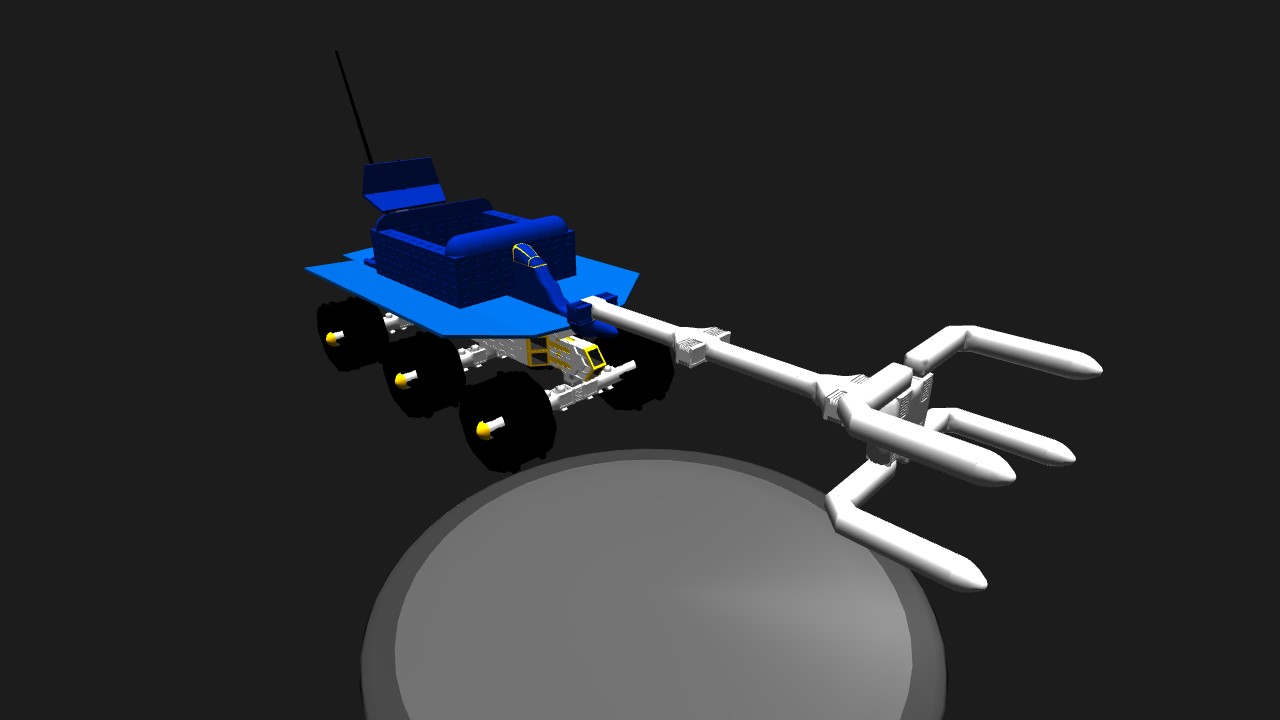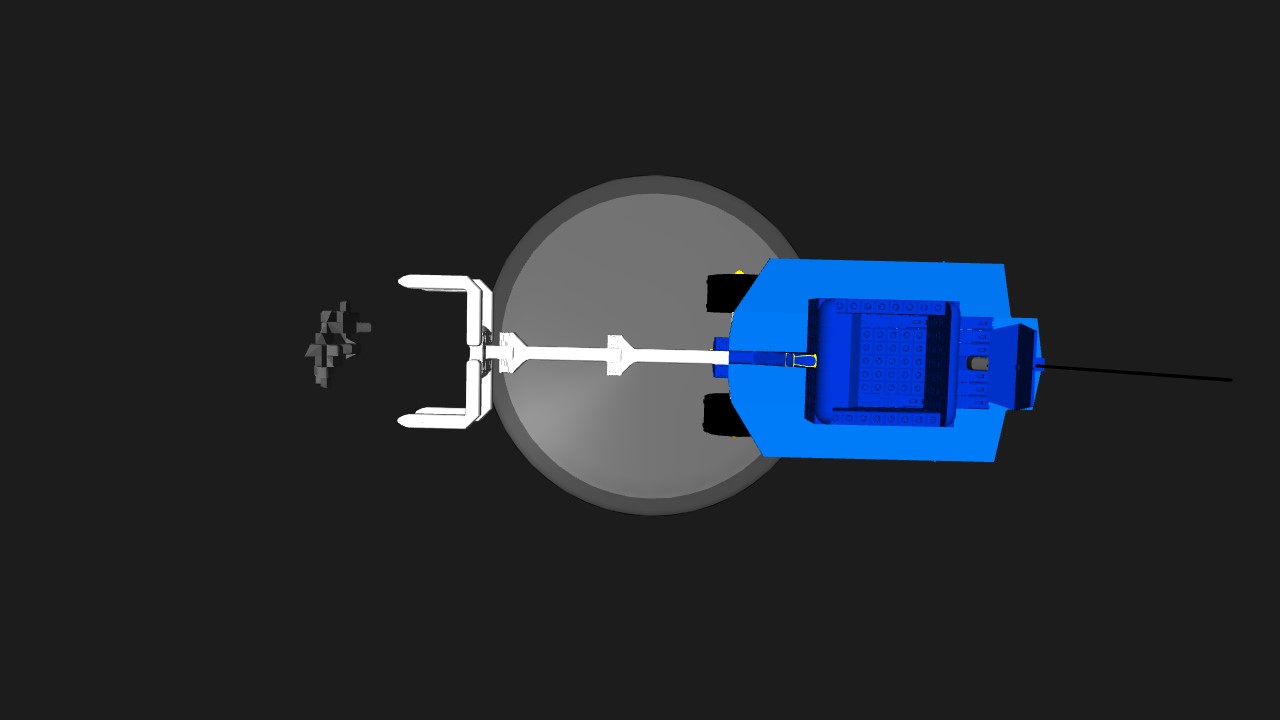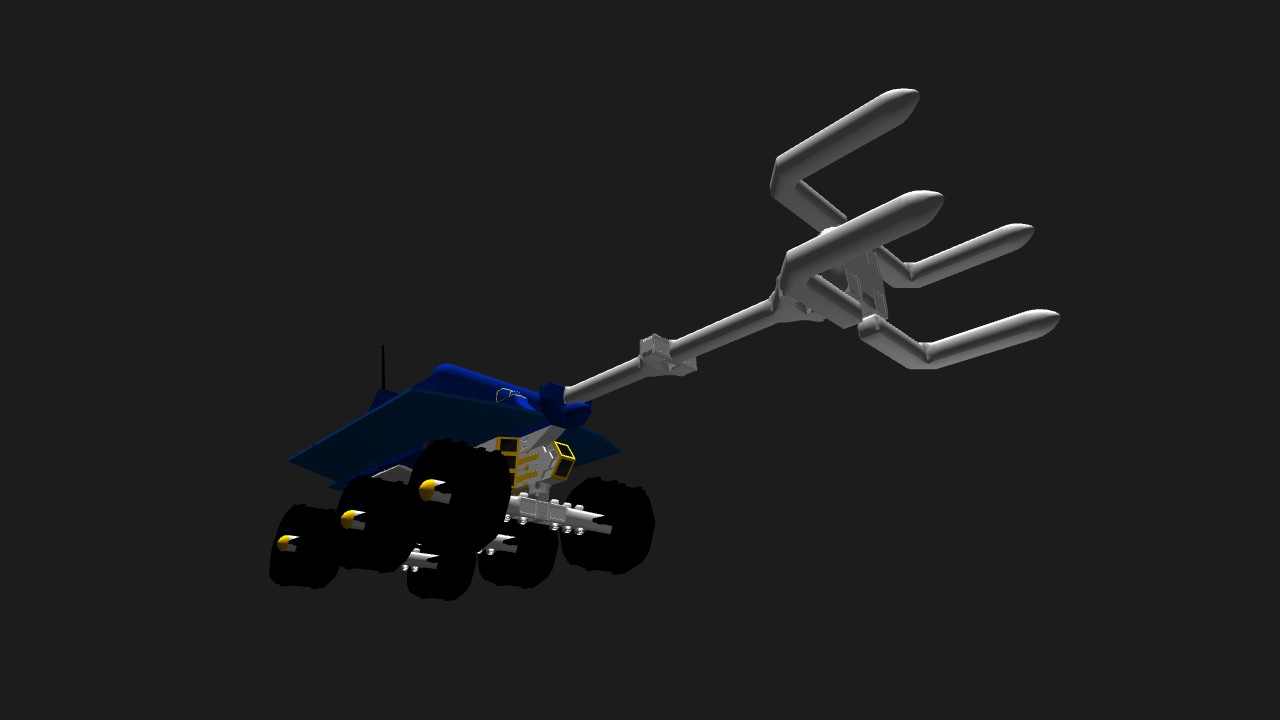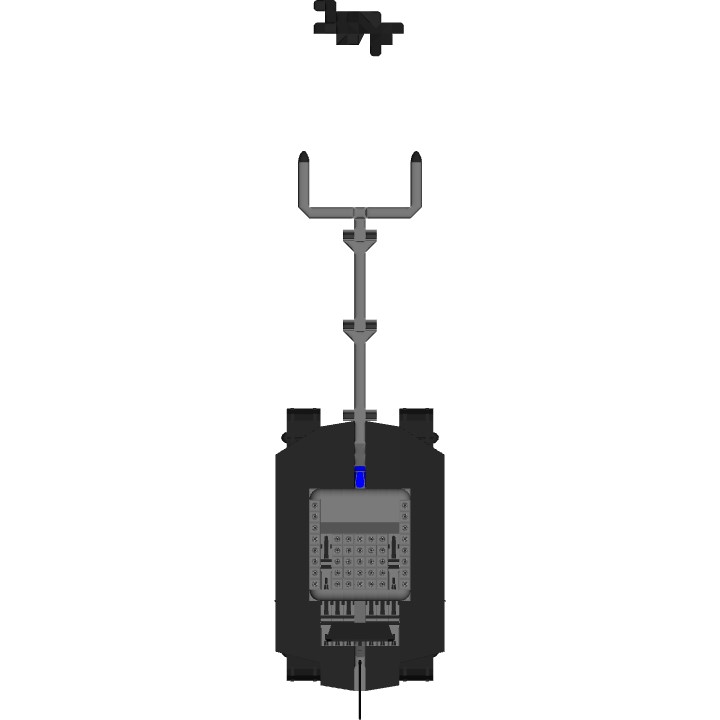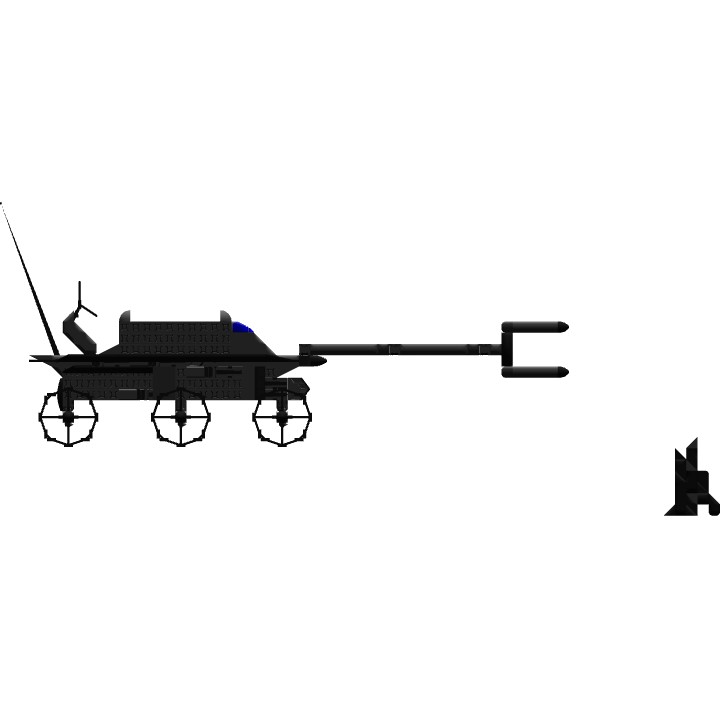Houston, the rover has landed. This is a functioning model of a lunar explorer. The arm is fully operational and there is a small rock that can be picked up and placed in the cargo compartment. It also has a top speed of about 28 mph. But the best thing in my opinion is that this rover didn't cost 2.5 million dollars.
-How to operate
-use the throttle to move the vehicle forward and use the yaw to steer the vehicle. The yaw will also simultaneously rotate the radar dish left and right.
-use the v-tol switch to open and close the grabber at the end of the arm.
-activate group 1 and use the pitch to operate the base of the arm.
-activate group 2 and use the pitch to operate the middle joint of the arm.
-activate group 3 and use the pitch to operate the angle of the grabber.
-group 6 activates the angle of the v-tol nozzles and the v-tol switch is used to angle them. But since the angle of them doesn't do anything good, you don't have to worry about it. Unless you just want to slow the vehicle down.
NOTE: when the rock is in the grabber don't close the grabber all the way because it will break the grabber. Also if a small piece of the wheel falls off don't worry about it, because it can still keep going. But other than that there is nothing else to worry about.
Specifications
General Characteristics
- Created On Android
- Wingspan 24.3ft (7.4m)
- Length 105.0ft (32.0m)
- Height 45.4ft (13.8m)
- Empty Weight 57,520lbs (26,091kg)
- Loaded Weight 87,029lbs (39,476kg)
Performance
- Power/Weight Ratio 2.324
- Wing Loading 45.6lbs/ft2 (222.5kg/m2)
- Wing Area 1,909.6ft2 (177.4m2)
- Drag Points 28286
Parts
- Number of Parts 670
- Control Surfaces 0
- Performance Cost 1,757

